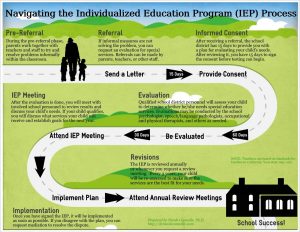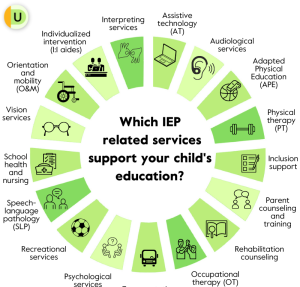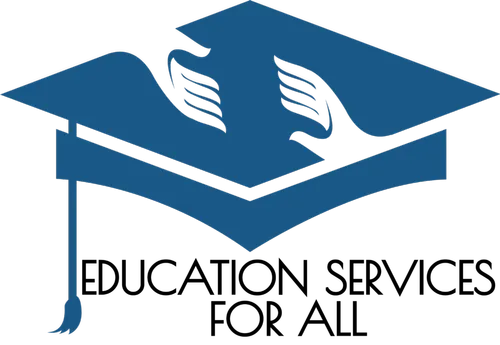Introduction In accordance with the William D. Ford Federal Direct Loan Program, the U.S. Direct Educational Services extends loans to aid students and parents in meeting the expenses associated with attending a postsecondary institution. This section of the Federal Student Aid Handbook furnishes guidance to educational institutions in assessing the eligibility of students and parents
Introduction
In accordance with the William D. Ford Federal Direct Loan Program, the U.S. Direct Educational Services extends loans to aid students and parents in meeting the expenses associated with attending a postsecondary institution. This section of the Federal Student Aid Handbook furnishes guidance to educational institutions in assessing the eligibility of students and parents for Direct Loans, advising student borrowers, and disbursing Direct Loans.
Competent personnel are on hand to deliver instruction tailored to the curriculum and/or Individualized Education Program (IEP) within the student’s educational environment, be it the school or home. These services encompass coordinating the ER/RR/IEP process, formulating IEPs, and facilitating the transition back to the home school district or placement in CAIU classes. Direct Educational Services and Itinerant COSERs Itinerant Direct Educational Services offer a means for our collaborating educational institutions to provide essential student instruction and services that they might otherwise find challenging to furnish.
ONC BOCES engages and assigns itinerant educators in academic disciplines, the arts, and student support domains, along with related service providers, to schools where a full-time position is not feasible due to insufficient student enrollment. These itinerant educators and service providers cater to both the general student populace and those with disabilities. Presented below are the areas where ONC BOCES presently renders Itinerant Services to our collaborating districts.
What is the IEP procedure?

Image by: drnicoleconnolly.com
Direct Educational Services It is imperative to recall that the procedural requisites aimed at ensuring adherence to the IEP process to devise robust IEPs. However, before embarking on this process, educators ought to acquaint themselves with fundamental aspects of pre-referral practices and the underlying principles of the Individuals with Disabilities Education Act (IDEA). Direct Educational Services and Pre-Referral When a student manifests learning or behavioral challenges, educators initially seek to ascertain whether adjustments to instruction or other facets of the learning milieu suffice to address them.
This is commonly known as the pre-referral process, a collaborative approach adopted by many schools to aid classroom educators in implementing interventions for students grappling with academic or behavioral issues. For certain students, these minor adjustments prove adequate, obviating the need for further interventions. However, for others, the pre-referral process culminates in a formal referral for assessment for special education services.
Direct Educational Services vis-à-vis Federal and State
Regulations Instruction dispensed in various settings such as the classroom, home, hospitals, and other environments. Notably, 34 CFR § 300.115, which pertains to the Continuum of alternative placements, encompasses Instruction Conducted in the Home, encompassing alternative placements delineated in the definition of special education under 34 CFR § 300.39 (instruction in regular classes, special classes, special schools, home instruction, and instruction in hospitals and institutions). Pennsylvania’s special education regulations, specified under Title 22 PA Code Chapter 14, particularly § 14.102 Purposes, incorporate by reference pertinent federal regulations related to Instruction Conducted in the Home.
These include: 34 CFR § 300.39 (pertaining to special education), 34 CFR § 300.113 and § 300.114(a)(2) (pertaining to routine inspection of hearing aids and external components of surgically implanted medical devices; and Least Restrictive Environment (LRE) requirements), and 34 CFR §§ 300.115—300.117 (concerning the continuum of alternative placements; placements; and nonacademic settings).
Direct Educational Services and Placement

Image by: undivided.io
Upon evaluating a student, a local educational agency (LEA) tasked with determining whether the student possesses a disability necessitating specially tailored instruction through the formulation of an IEP. As per 34 CFR § 300.306 (c)(2): If it determined that a child has a disability and requires special education and related services, an IEP must devised in accordance with §§ 300.320—300.324. Subsequently, based on the IEP, the LEA must ascertain the educational placement that best aligns with the principle of least restrictive environment. However, the term “educational placement” remains undefined by the Individuals with Disabilities Education Act (IDEA) and its implementing regulations. According to 34 C.F.R. § 300.116 Placements:
When determining the educational placement of a child with a disability, including a preschool child with a disability, every public agency must ensure that… Instruction confined to students Instruction Conducted in the Home restricted to students necessitating full-time special education services and programs outside the traditional school setting for the entirety of the day. Typically, such students are individuals who, due to severe medical conditions or mobility impairments, are incapable of commuting to school. Despite receiving instruction at home as prescribed by their IEP team, such students entitled to a free appropriate public education (FAPE) commensurate with that provided to their non-disabled peers, unless such instruction poses a risk to the student’s health or well-being.
Instruction conducted in the home deemed inappropriate in instances where the LEA encounters challenges in arranging the requisite program or placement for a student. In such scenarios, the LEA obligated to continue serving the student in accordance with their IEP while expeditiously endeavoring to secure the necessary services. These efforts may entail seeking assistance from the Pennsylvania Department of Education (PDE) or other agencies involved in the welfare of the student.
Direct Educational Services and Homebound

Image by: childrens.com
Instruction A student enrolled in a nonpublic school who is unable to attend classes due to physical, mental, or emotional ailments or injuries substantiated by a licensed physician may receive instruction at home or in a hospital through a tutor provided by the school district in which the student resides. Should an extended absence anticipated and homebound instruction deemed appropriate, it is advisable for the administrator of the nonpublic school to confer with parents regarding the possibility of arranging such instruction. Generally, an absence exceeding two weeks considered prolonged and necessitates verification by the student’s physician.
Subsequently, parents encouraged to liaise with the public school district to initiate instruction at the earliest convenience. If preferred, the administrator of the nonpublic school may initiate contact with the district on behalf of the parents. In compliance with C.R. 175.21, instruction should dispensed for a minimum of five hours weekly, preferably distributed over one-hour sessions at the elementary level, and a minimum of ten hours weekly, ideally divided into two-hour sessions at the secondary level. During the period in which the student receives instruction facilitated by the public school district, the district may claim the student for state aid purposes.
Conclusion
A standardized format has established for examples, with examples being sequentially numbered within Volume 8 to facilitate easy referencing by their respective numbers. Furthermore, the examples have streamlined by eschewing fictitious school and student names. Effective communication between nonpublic school personnel and the tutor employed by the district is imperative to ensure the continuity of the student’s customary curriculum. The administrator of the nonpublic school should furnish textbooks, supplementary materials, and pertinent records of the student to the tutor as instruction commences. Upon the culmination of this interim service, the tutor ought to furnish the nonpublic school with a progress report detailing the student’s performance during the period of homebound instruction
















